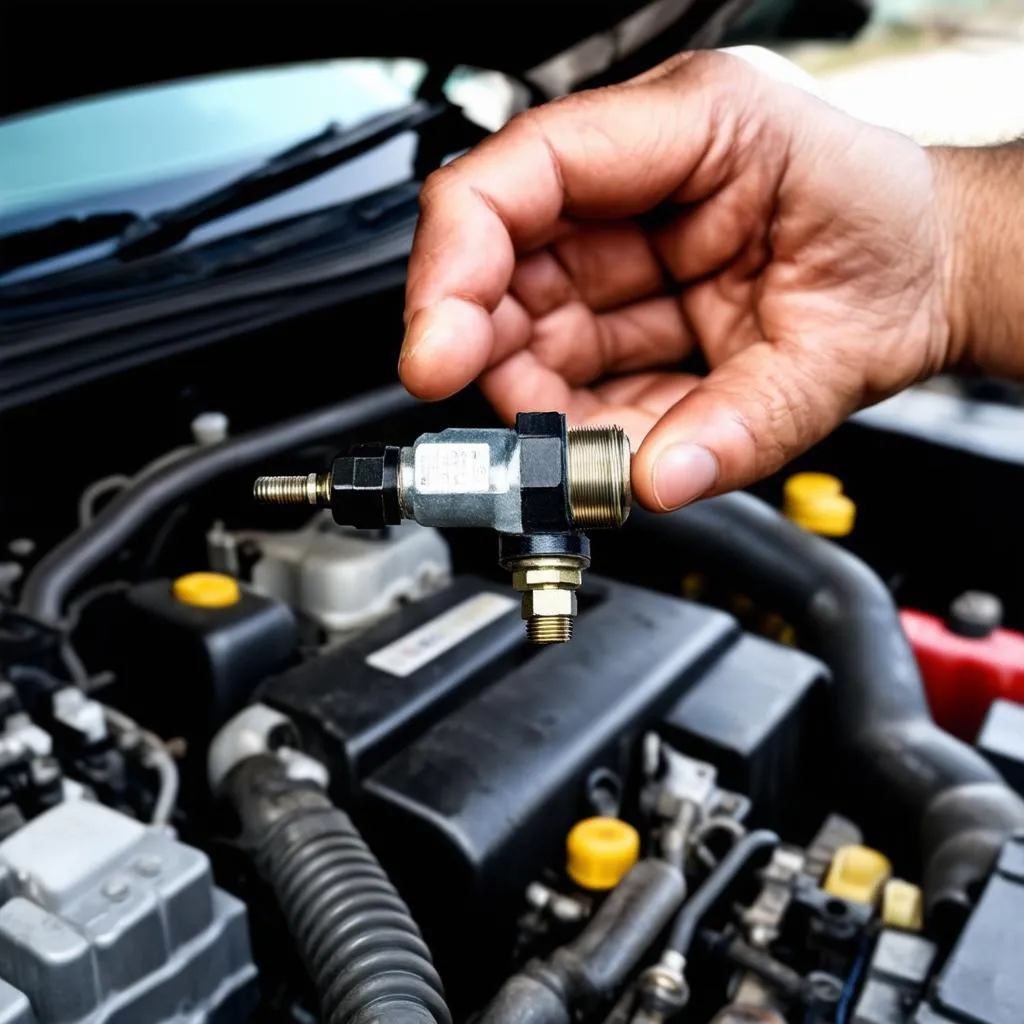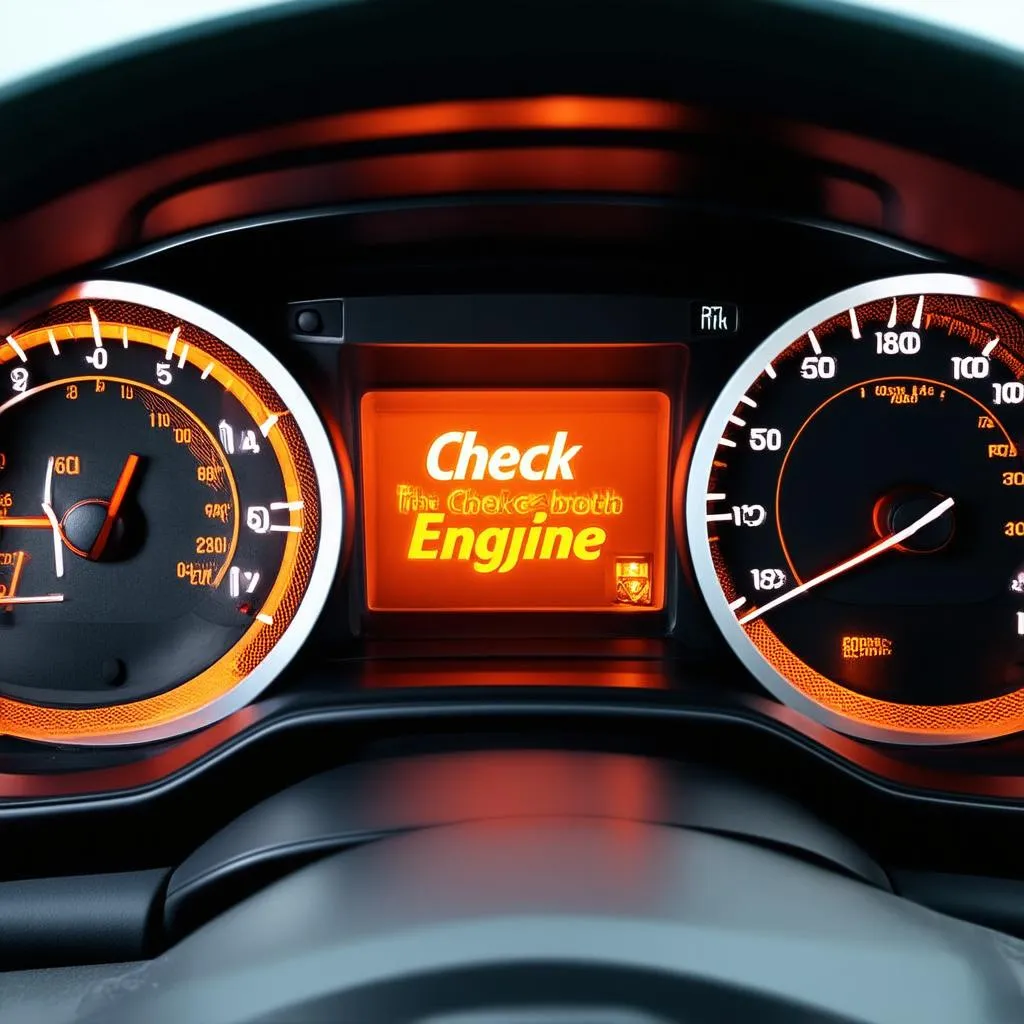“Check Engine” light glowing like a Christmas ornament on your dashboard? It’s a feeling we all dread, especially when it comes with that sinking feeling that something’s not quite right with your beloved car. One common culprit behind this unwelcome illumination is the OBD code P2196. But what does this cryptic code mean, and how can you decipher its message? Don’t worry, fellow car enthusiasts, we’re here to demystify OBD code P2196 and help you get your car back on the road, running smoother than ever.
What Does OBD Code P2196 Mean?
Imagine this: you’re cruising down the highway, lost in your favorite playlist, when suddenly, you notice your car isn’t accelerating as smoothly as it used to. You pull over, a little concerned, and that’s when the “Check Engine” light decides to make its grand entrance. A quick trip to your trusted mechanic, a hookup to the OBD scanner, and voila! The mysterious code P2196 pops up.
In simple terms, OBD code P2196 signals a problem with your car’s oxygen sensor, specifically Bank 1 Sensor 1. This little sensor, often referred to as an O2 sensor, plays a crucial role in monitoring the amount of oxygen in your car’s exhaust gases. Why does this matter, you ask? Well, this information is vital for your car’s computer to regulate the air-fuel mixture entering the engine.
A perfectly balanced air-fuel mixture ensures optimal engine performance, fuel efficiency, and reduced emissions. However, when the oxygen sensor throws a P2196 code, it’s basically waving a red flag, indicating that the air-fuel mixture is off-kilter – likely too rich (too much fuel compared to air).
Decoding P2196: Symptoms, Causes, and Solutions
Feeling the Symptoms
Just like our bodies give us warning signs when something’s amiss, our cars do too. When your car is struggling with OBD code P2196, you might experience some telltale symptoms:
- Illuminated Check Engine Light: This one’s a no-brainer!
- Decreased Fuel Economy: Noticing you’re making more frequent trips to the gas station? A rich air-fuel mixture can be a real fuel guzzler.
- Rough Engine Idle: Is your car idling rough or vibrating more than usual? A P2196 code could be the culprit.
- Failed Emissions Test: A rich air-fuel mixture can lead to increased emissions, potentially causing you to fail an emissions test.
Unmasking the Culprits
Several factors can trigger the dreaded P2196 code. Let’s shine a light on some of the usual suspects:
- Faulty Oxygen Sensor (Bank 1 Sensor 1): Over time, oxygen sensors can wear out or become contaminated, leading to inaccurate readings.
- Vacuum Leaks: Leaks in the vacuum system can disrupt the air-fuel mixture, causing the oxygen sensor to report a rich condition.
- Fuel Pressure Issues: High fuel pressure can flood the engine with too much fuel, triggering a P2196 code.
- Faulty Fuel Injectors: Leaky or clogged fuel injectors can also disrupt the air-fuel balance.
- Exhaust Leaks: Leaks in the exhaust system, particularly before the oxygen sensor, can allow outside air to enter, throwing off the sensor’s readings.
Putting the Brakes on P2196: Solutions and Fixes
Dealing with a P2196 code doesn’t have to be a mechanic’s worst nightmare. Here are some common solutions that can get your car back in tip-top shape:
- Oxygen Sensor Replacement: If the oxygen sensor is the root of the problem, replacing it is often the most effective solution.
- Vacuum Leak Repair: Identifying and repairing any vacuum leaks is crucial for restoring proper air-fuel mixture control.
- Fuel System Inspection: A mechanic can inspect your fuel system, including the fuel pressure regulator, pump, and injectors, to identify and address any issues.
- Exhaust System Repair: Repairing exhaust leaks ensures accurate oxygen sensor readings and optimal engine performance.
Beyond the Technical: A Touch of Automotive Feng Shui
While we’re all about the mechanics of car repair, there’s a certain charm to considering the less tangible aspects of car ownership. In the spirit of automotive feng shui, keeping your car clean, organized, and well-maintained can create a more harmonious driving experience. Just like a cluttered home can lead to a cluttered mind, a neglected car can invite mechanical hiccups.
Seeking Expert Guidance
Remember, while these tips offer a starting point, diagnosing and repairing complex car issues is best left to the professionals.
Need help with Diagnostics Tools or have any car repair questions? Our team of automotive experts is just a message away! Contact us on WhatsApp at +84767531508 for 24/7 support.
Exploring Related Avenues
- OBD Code P2195: Unveiling Its Secrets: For insights into a similar oxygen sensor code, check out our article on OBD Code P2195. (http://techcarusa.com/obd-code-p2195/)
Your Car’s Health Matters
Ignoring a persistent “Check Engine” light or an OBD code like P2196 can lead to more severe engine problems down the road. Addressing the issue promptly not only ensures your car’s optimal performance but also gives you peace of mind knowing you’re behind the wheel of a healthy and happy vehicle.
Do you have any questions or experiences to share about OBD code P2196? We’d love to hear from you in the comments below!
 car-oxygen-sensor
car-oxygen-sensor
 dashboard-warning-light
dashboard-warning-light